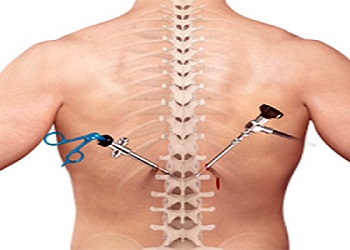Minimally Invasive Spine Surgery and the Role of Implants

Minimally Invasive Spine Surgery (MISS) has revolutionized the field of spinal care by offering patients faster recovery, reduced postoperative pain, and shorter hospital stays. As back pain and spinal disorders affect millions of people worldwide, the demand for advanced yet less traumatic surgical techniques has surged. MISS represents a significant leap forward, using precision instruments, smaller incisions, and specialized implants to address spinal pathologies with minimal tissue disruption.
One of the driving forces behind the success of these procedures is the availability of high-quality, anatomically adapted implants provided by reliable suppliers. For instance, a leading spine implants manufacturer in Tanzania is vital in supplying advanced surgical tools and implants designed explicitly for minimally invasive procedures, ensuring that surgeons have access to the latest spinal stabilization and correction innovations.
The advancement in implant technology goes hand in hand with the evolution of ortho implants, which have seen significant progress in material composition and biomechanical design. These improvements allow for better integration with bone structures, less chance of complications, and enhanced durability, which are crucial for the success of MISS procedures.
Understanding Minimally Invasive Spine Surgery
MISS is a surgical technique to stabilize the vertebral bones and spinal joints or relieve pressure on the spinal nerves, often caused by conditions like herniated discs, spinal stenosis, or scoliosis. Unlike traditional open spine surgery, MISS utilizes small incisions and avoids cutting through large muscles.
Key benefits include:
- Reduced blood loss
- Less postoperative pain
- Decreased risk of infection
- Faster return to daily activities
This technique employs fluoroscopic imaging, endoscopes, and specially designed retractors to safely navigate and access the spinal region. Because the disruption to surrounding tissues is minimal, recovery is typically much faster than conventional methods.
Role of Implants in Spine Stabilization
Implants are a cornerstone of spinal surgery, especially in MISS, where precision and compatibility with minimally invasive tools are essential. These implants help to:
- Restore spinal alignment
- Stabilize the vertebrae during fusion
- Maintain the intervertebral space
- Facilitate bone healing
Common implants used in MISS include pedicle screws, rods, cages, plates, and interbody fusion devices. These components are often inserted using tubular retractors and guided by real-time imaging, making accurate placement crucial for long-term outcomes.
Implant Material Innovations for MISS
Materials used in spinal implants must offer strength, biocompatibility, and the ability to encourage bone fusion. Titanium and its alloys remain the gold standard due to their excellent strength-to-weight ratio, corrosion resistance, and MRI compatibility.
Other materials include:
- PEEK (Polyetheretherketone): Offers elasticity similar to bone and is radiolucent, making post-op imaging easier.
- Carbon Fiber Composites: Ideal for patients undergoing radiation therapy.
- Bioresorbable Materials: Useful in pediatric or temporary applications, although less common in adult spinal surgery.
Implant materials must also resist fatigue and mechanical failure, particularly in active or compromised bone density patients.
Customization and Anatomical Fit
One of the hallmarks of modern spinal implants used in MISS is the move toward patient-specific solutions. These implants are often designed using preoperative imaging and advanced software for precise modeling based on the patient’s anatomy.
Advantages of customized implants include:
- Enhanced implant-to-bone fit
- Reduced risk of implant migration
- Improved fusion rates
- Shorter surgical time due to exact sizing
This customization is especially beneficial in complex deformities or revision surgeries, where standard implants may not offer the required anatomical conformity.
Challenges in MISS and the Role of Technology
While MISS offers numerous advantages, it is not without its challenges. The limited field of vision, reliance on imaging, and precision required for implant placement demands a high level of expertise.
Technological solutions addressing these challenges include:
- Intraoperative navigation systems for accurate implant placement
- Robotic-assisted surgery that enhances precision and repeatability
- Real-time neuromonitoring to avoid nerve damage during implant insertion
Together, these tools improve safety and help surgeons adapt quickly to the nuances of minimally invasive procedures.
Postoperative Recovery and Long-Term Outcomes
Patients undergoing MISS generally experience a more rapid recovery timeline than those who have traditional open spine surgery. Well-designed implants play a key role in this accelerated recovery, as they offer immediate stability and promote effective fusion.
Postoperative care often includes:
- Short hospital stay, often less than 48 hours
- Early mobilization
- Physiotherapy to restore strength and flexibility
- Regular imaging to monitor fusion progress
Studies have shown that with proper implant selection and surgical technique, patients can expect outcomes equal to or better than traditional approaches with significantly reduced morbidity.
Future Directions in Spine Implants and MISS
The future of MISS is closely linked with continuous advancements in implant design and surgical technology. Some of the emerging trends include:
- 3D-printed Implants: Allows for intricate geometries and porous surfaces that promote bone ingrowth.
- Smart Implants: Equipped with sensors to monitor pressure, alignment, and fusion status in real time.
- Nanotechnology Coatings: Enhance osseointegration and reduce infection risks.
Global collaboration between surgeons, researchers, and manufacturers, such as the initiatives led by a prominent implant manufacturer, is essential for the continued success and accessibility of these innovations.
Future of Spinal Care
Minimally Invasive Spine Surgery represents the pinnacle of modern spinal care, offering patients less pain, quicker recovery, and better long-term function. The sophisticated implants developed in partnership with leading orthopedic implant producers are central to its success. These implants must deliver precise anatomical fit, exceptional durability, and seamless compatibility with advanced surgical tools.
As surgical technology and implant design continue to evolve, the future of spinal care lies in procedures that are effective and minimally disruptive to the patient’s body. With the support of skilled implant manufacturers and an ongoing commitment to innovation, MISS is poised to become the standard of care for spinal disorders globally.




